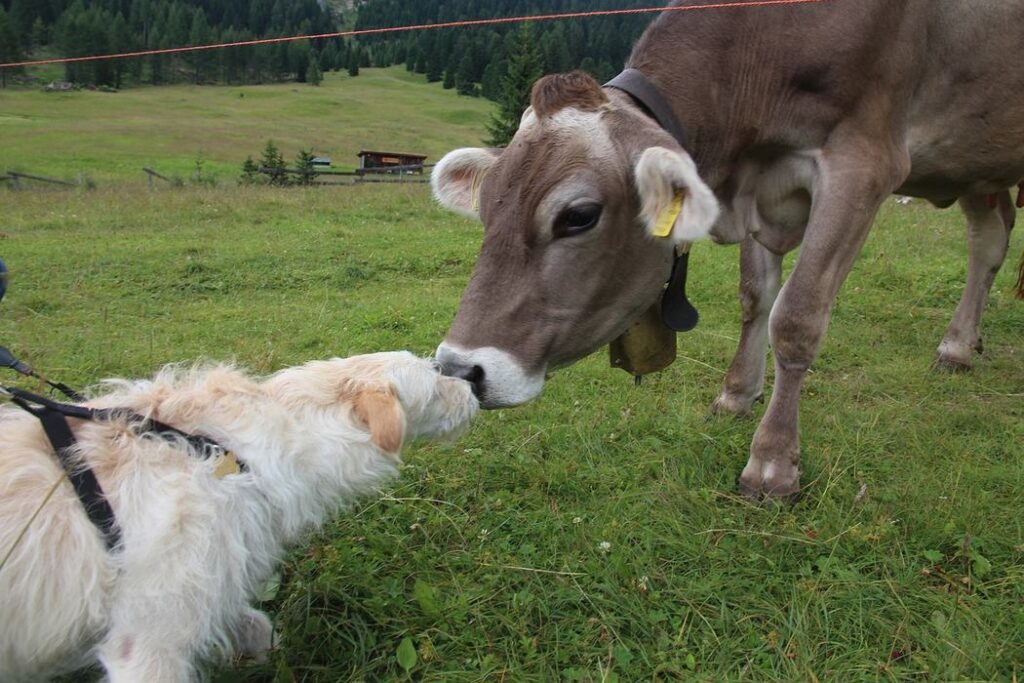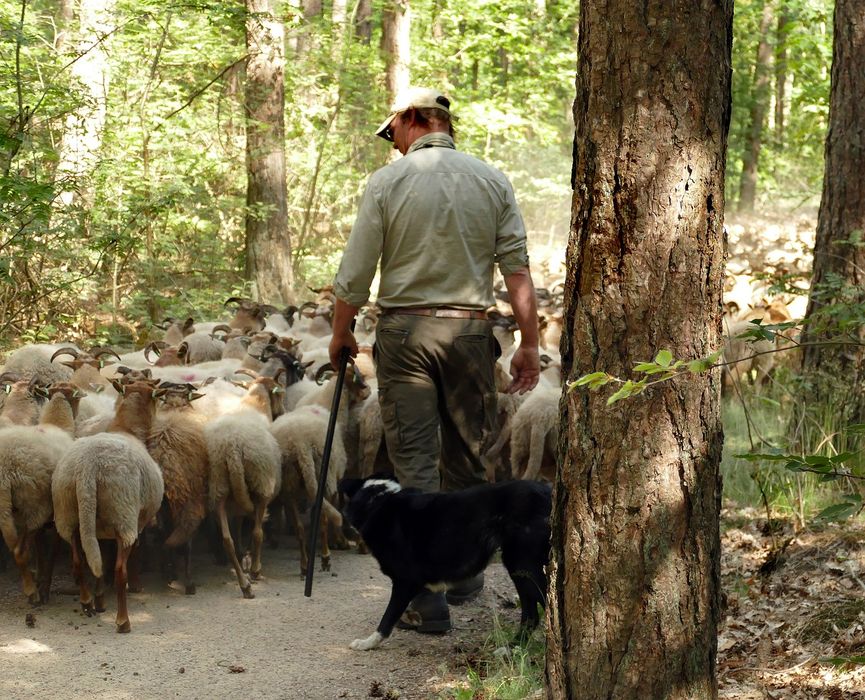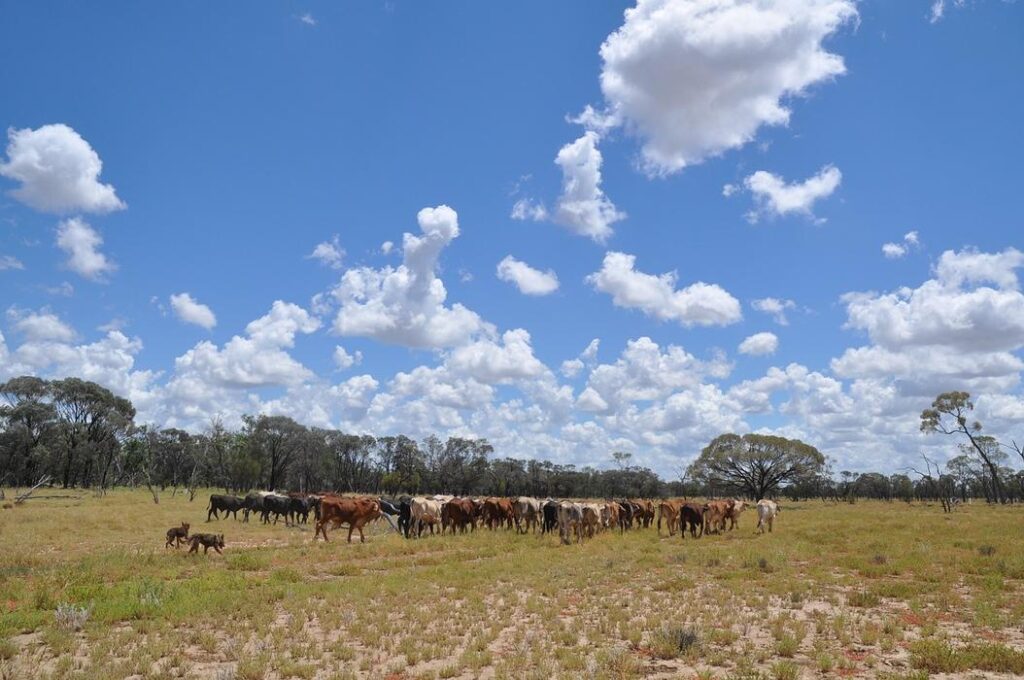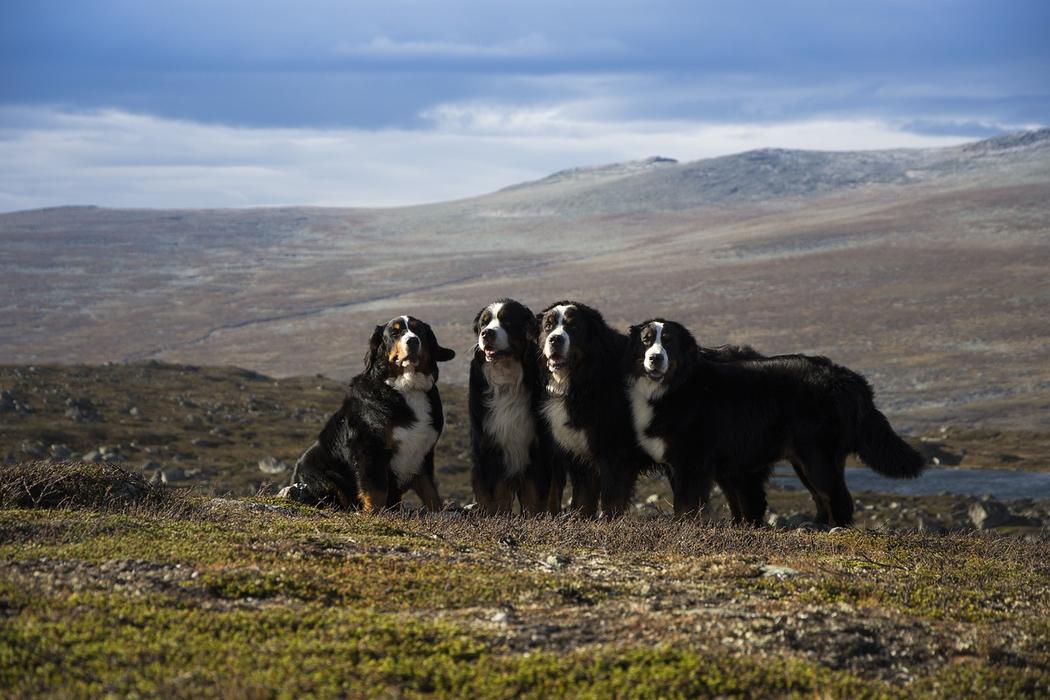How To Train a Cattle Dog: Cattle dogs, also known as Australian Cattle Dogs, Blue Heelers, or Queensland Heelers, are renowned for their intelligence, agility, and herding capabilities. Originating in Australia in the 19th century, these dogs were bred for the demanding job of driving cattle over rough terrain for long distances. Today, their versatility, loyalty, and energy make them excellent companions, not just for herding but also for various canine sports and family activities. The foundation of a fulfilling relationship with a cattle dog lies in understanding and training, a journey that requires commitment, patience, and love.
How To Train a Cattle Dog: Techniques for a Well-Behaved and Skilled Companion”
Understanding Cattle Dogs
Historical Background and Primary Functions
The breed emerged from a mix of native Australian dingoes with imported herding dogs. This combination was aimed at creating a breed capable of handling the harsh Australian outback. Their primary function has always been herding, specifically driving cattle, using their nip to move reluctant animals while avoiding kicks with agility.
Character Traits
Cattle dogs are characterized by their high intelligence, remarkable energy levels, and a strong work ethic. These traits make them eager to learn but also necessitate a significant amount of mental and physical stimulation.
Common Behaviors and Challenges
Their intelligence often leads to stubbornness, making consistent training essential. Common challenges include managing their herding instinct, which can manifest as nipping at heels, and ensuring they have enough activity to prevent boredom-related behaviors such as chewing or digging.
Preparing for Training

Proper preparation is essential for successful training sessions with your cattle dog. Here’s how to lay a solid foundation:
Establishing a Bond:
- Spend quality time with your dog every day, engaging in activities they enjoy.
- Use positive reinforcement such as treats, praise, and affection to build trust.
- Ensure that interactions are positive, consistent, and reassuring to strengthen your bond.
Essential Supplies for Training:
- Leash and Collar: Durable and comfortable for daily training sessions.
- Training Treats: High-value treats to reward and motivate your dog.
- Toys: Interactive toys for mental stimulation and play.
- Crate: For safe confinement during unsupervised times and to aid in house training.
Setting Up a Routine:
- Establish a consistent daily schedule for feeding, exercise, and training to create a sense of predictability for your dog.
- Include specific times for training sessions, keeping them short and focused.
- Ensure that the routine balances physical exercise, training, and relaxation to meet your dog’s needs.
Basic Training Techniques
Effective training techniques are crucial for teaching your cattle dog obedience and good manners. Here’s how to approach basic training:
Socialization:
- Importance of Early Socialization: Introduce your dog to a variety of people, animals, sounds, and environments early to develop a well-adjusted adult dog.
- How to Socialize Your Cattle Dog:
- Schedule playdates with other dogs.
- Visit different environments such as parks, busy streets, and pet-friendly stores.
- Expose your dog to various household and outdoor sounds gradually to prevent fearfulness.
Obedience Training:
- Basic Commands such as Sit, Stay, Come, and Heel are fundamental for every dog to learn.
- Use clear and consistent commands.
- Reward immediately with treats or praise when your dog follows a command correctly.
Techniques for Teaching Commands:
- Begin in a quiet environment to minimize distractions.
- Use a lure, like a treat, to guide your dog into the desired position.
- Gradually increase the difficulty by adding distractions, duration, and distance.
Crate Training:
- Benefits of Crate Training include providing a safe and comfortable space for your dog, aiding in house training, and preventing destructive behavior when unsupervised.
- Steps to Crate Train Your Cattle Dog:
- Introduce the crate gradually, making it a comfortable and positive space with the help of treats and toys.
- Start with short periods of confinement and gradually increase as your dog becomes more comfortable.
- Never use the crate as a punishment; it should always be a positive space.
By focusing on these preparatory steps and basic training techniques, you’re setting a strong foundation for your cattle dog’s training journey. Remember, patience, consistency, and positive reinforcement are key to successful dog training.
Advanced Training for Working with Livestock
Training your cattle dog for livestock work requires understanding their natural instincts and refining those instincts into controlled behaviors.
Understanding Herding Instincts:
- Recognize that your dog’s desire to chase and herd is instinctual.
- Observe your dog’s natural inclination towards moving objects and use this to guide training.
Basic Herding Commands:
- “Away” (move away from the handler) and “Come-By” (move towards the handler) to direct movements around livestock.
- “Lie Down” to stop movement immediately, offering control during herding.
- “That’ll Do” signals the end of work, helping your dog understand when the task is complete.
Training for Control and Precision in Herding:
- Start in a controlled environment to introduce basic commands without the stress of actual livestock.
- Gradually introduce live animals, ensuring both the safety of the livestock and your dog.
- Use positive reinforcement to reward correct behavior and consistent commands to correct errors.
Safety Considerations:
- Always prioritize the safety of both the dog and the livestock by monitoring interactions closely.
- Introduce your dog to livestock under controlled and calm conditions to prevent accidents.
Behavioral Management

Managing your cattle dog’s behavior is crucial for a harmonious relationship, especially considering their high energy and intelligence.
Addressing Common Behavioral Issues:
- Identify triggers for behaviors like excessive barking, chewing, and aggression towards other animals.
- Implement preventive strategies, such as providing adequate physical and mental exercise to mitigate these behaviors.
Positive Reinforcement Techniques:
- Use treats, praise, and play to reward desired behaviors, reinforcing the behaviors you want to see.
- Avoid negative reinforcement that may lead to fear or aggression; focus on encouraging positive actions.
When to Seek Help from a Professional:
- If behavioral issues persist despite your efforts, consult a professional dog trainer or behaviorist.
- Look for professionals with experience in working breeds and behavioral management for the best outcomes.
Specific Strategies for Behavioral Issues:
- Excessive Barking: Teach a “Quiet” command and reward silence. Ensure your dog has enough exercise and mental stimulation.
- Chewing: Provide appropriate chew toys and keep valuables out of reach. Use deterrents on items that cannot be moved.
- Aggression Towards Other Animals: Socialize your dog early and often. Use controlled introductions and positive reinforcement to encourage calm behaviors around other animals.
Maintaining Physical and Mental Health
Ensuring your cattle dog’s physical and mental well-being is paramount for a happy and healthy life. Here’s how you can support their health:
Exercise Requirements:
- Daily vigorous exercise is essential. Activities can include running, hiking, fetch, and agility training.
- Incorporate exercises that simulate herding tasks to satisfy their natural instincts.
Mental Stimulation Activities:
- Puzzle toys and interactive games that challenge their intellect.
- Training sessions for new tricks or commands keep their mind engaged.
- Participate in dog sports like agility, obedience, or herding trials.
Diet and Nutrition:
- Provide a balanced diet suited to their age, size, and activity level.
- Consult with a veterinarian to tailor nutrition to your dog’s specific health needs.
- Monitor treats and food intake to prevent obesity, which can lead to health issues.
Training Challenges and Solutions

Training a cattle dog can present unique challenges due to their intelligence and energy. Here are strategies to overcome common training hurdles:
Overcoming Stubbornness or Disinterest:
- Find motivating rewards: Discover what excites your dog the most—be it treats, toys, or praise.
- Keep sessions short and fun: To maintain interest, avoid long, repetitive training sessions.
Adjusting Training Techniques for Individual Dogs:
- Be flexible in your approach: If a method isn’t working, be willing to try different techniques.
- Consider your dog’s personality: Tailor your training to fit their individual learning style and preferences.
Recognizing and Celebrating Progress:
- Acknowledge small achievements: Even minor improvements are worth celebrating. This encourages both the trainer and the dog to keep progressing.
- Use positive reinforcement: Reinforce good behavior with rewards, creating a positive association with learning.
Specific Training Challenges and Solutions:
- Dealing with High Energy: Incorporate training into physical activities. Use games and sports that drain energy and stimulate mentally.
- Handling Distractions: Gradually introduce distractions during training to teach focus. Start in a quiet environment and slowly add more challenging distractions.
- Building Consistency: Ensure all family members use the same commands and rewards to avoid confusing your dog.
Conclusion
Training a cattle dog is a rewarding journey that enhances the bond between you and your dog. Through understanding, patience, and consistent training, you can unlock the full potential of your cattle dog, ensuring a happy, healthy, and harmonious life together. With the right approach, cattle dogs can excel not only in herding but in a variety of roles, making them versatile and cherished companions.

